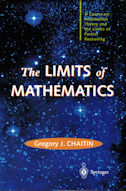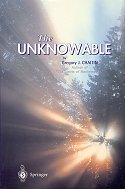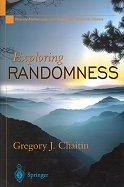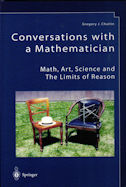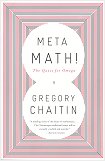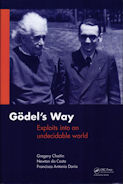Here are three Gregory Chaitin lectures on his algorithmic complexity theory and the halting probability Omega. The lectures are "Randomness in arithmetic and the decline and fall of reductionism in pure mathematics", "Elegant LISP programs", "An invitation to algorithmic information theory". There is also "The limits of mathematics".
As far as I understand it [after reading this book, and then having a long conversation with a more mathematically experienced colleague], Chaitin’s argument is as follows. Omega is the probability that a program chosen at random halts (modulo some technicalities to make this definition well behaved). We would like to find the value of Omega. It is possible to increase the lower bound on Omega’s value by observing that particular programs halt. But clearly it is not possible to decrease the upper bound except by reasoning that particular programs do not halt, for it is not possible to observe a program not halting. Algorithmic information theory shows that it is not possible to reason about programs that are much larger than one’s reasoning system. So the only way to tighten the upper bound on Omega is to keep increasing the size of one’s reasoning system, by adding more axioms.
There is some overlap and repetition between the chapters, but this is no bad thing, as he gets to explain the same ideas from different angles. These are edited transcripts of lectures, and have a rather chatty, even exuberant, style, but lack some of the polish that might be expected from a written essay. Never mind – this is a clear explanation of some deep results, from the original inventor himself. Mind expanding stuff.
Overview
Chaitin produced his first theoretical results in the 1970s.
What he has done since is program up these theorems, in a form of Lisp. This has allowed him to determine the actual (surprisingly small) values of numerical constants in some of his undecidability theorems, and lower bounds on the halting probability. Probably only a mathematician would make the following definition:
(Although, to be fair, he does say that these "elegant" programs are not the kind of things you would want to write for real!) He goes on to explain the conclusions of his work.
However, this is not necessarily a problem.
But what has made a difference to the working mathematician is the computer. A whole new subject is opening up: empirical, or experimental, mathematics.
